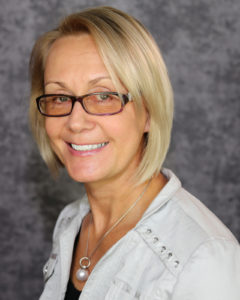Keynote Speakers

Carmelo Gentile
Politecnico di Milano, Italy
Inspections and structural condition assessment of bridges:
The role of ambient vibration testing and continuous monitoring
In recent years, ambient vibration testing and continuous monitoring have received increasing attention and the installation of dynamic monitoring systems, especially on bridges, has become more and more common. Among the many motivations for the raising interest on vibration testing and monitoring, the most relevant are: (a) the ageing of existing bridges, often accompanied by poor maintenance and harsh environmental conditions; (b) the possibility of performing the health condition assessment of a bridge from the analysis of its dynamic response to operational loads, with no need for artificial inputs; (c) the technological advances, allowing more economical installation of monitoring systems and fully computer-based operation.
The lecture firstly focuses on the technology of vibration-based Structural Health Monitoring (SHM) of bridges. Subsequently, the application of different SHM strategies (involving the continuous monitoring or the use of repeated tests and baseline FE modelling) is exemplified with reference to relatively simple and complex bridges.
Carmelo Gentile is a Full Professor of Structural Engineering in the Department of Architecture, Built environment and Construction engineering at the Politecnico di Milano. He is a Member of the Scientific Committee of the Laboratory of Testing Materials & Structures (LPM), Politecnico di Milano, and has served as the Director of the Laboratory of Vibrations & Dynamic Monitoring of Structures (VibLab, section of the LPM) from 2006 to 2013.
As the Director of the VibLab, he commited the full-scale testing and/or continuous dynamic monitoring of more than 100 bridges, including several arch and cable-stayed bridges. He is responsible of the continuous structural monitoring of the Milan Cathedral.
He has authored or co-authored about 300 technical and scientific papers in the main topics of Bridge engineering, Cultural Heritage structures, Earthquake engineering, Modal and structural identification, Structural Dynamics and Vibration-based damage assessment. He has participated in the Scientific Committees of major international conferences on experimental dynamics (such as EURODYN, EVACES, IOMAC) and has participated as an invited keynote speaker at several international conferences.

Charalampos (Haris) Kontoes
National Observatory of Athens, Greece
Big Satellite Data for Ground Deformation Assessment at Global Scale
Displacement signals induced by geophysical phenomena are being systematically monitored with state-of-the-art time-series satellite SAR interferometry methodologies (SBAS, and PSI), and combining them with GPS measurements wherever these exist. Today we face the challenge to efficiently process big volumes of satellite data provided from ESA’s Sentinel-1 SAR mission. Currently, more than 110 TiB of data are acquired per month, a volume that is equivalent to the entire 7-year archive of the Envisat mission. With the advent of High Performance Cloud Computing (HPC) resources, new capabilities have become available for the processing of big data to estimate with millimeter accuracy ground deformation. BEYOND/NOA addresses these challenges through the geObservatory service. This service offers to the communities of GEO and Copernicus a global observatory of ready-to-use differential interferograms, exploiting advanced data search and mining tools of Sentinel-1 data, and analyzing these data in an HPC environment.
Dr Kontoes Charalampos (Haris) holds the position of Research Director at the National Observatory of Athens. He leads a research team with active participation in Space Programs of EU/ESA, in the fields of EO. He leads the European Center of Excellence BEYOND for the monitoring of Natural Disasters in the SE Europe. He is responsible for the operations of the “ESAʼs CollGS” in Greece, and the “Copernicus Hubs for Sentinels” in support to ESA’s operations globally. He is coordinating the implementation of GEOSS, and Copernicus in the N. Africa, M. East, and the Balkans. He assumed roles as National Delegate in Space Committees and Boards such as the EC/Space Program, ESA PBEO, GMES Steering Committee, COPERNICUS Task Force, EC Space Advisory Committee. He is member of the National Committee of the IUGG. He is author of more than 165 publications and an active member of the editorial boards of Scientific Journals as IJPRS, IJRS, SENSORS, IEEE Geoscience and RS.

Dorota A. Grejner-Brzezinska
The Ohio State University, Columbus, USA
On technological revolution in geospatial data acquisition,
analysis and application
In recent years, geospatial data acquired by satellites, aircraft, UASs, LiDAR scanning systems, development of 3D city models, availability of GIS databases that overlay real-world imagery with database metadata, artificial intelligence (AI), machine learning and robotics are just a few examples of a technological revolution that impacted geospatial data acquisition, processing and applications. Widespread use of well-established sensor fusion methods, geo-sensor networks, availability of miniaturized sensors and Web-based smart sensing and monitoring solutions further improve the outcome of the geospatial engineering tasks, including deformation monitoring. Another example of a new technology entering geospatial data and application market is mixed reality, especially in areas where increased safety requirements are mandated. The scientists and engineers have the ability to manipulate models in the field and leverage the benefits of mixed reality into their projects. The Internet of Things (IoT) facilitates a fast information exchange and inclusion of various levels, sources and types of data.
This paper will discuss the evolution of technologies, instrumentation and methods used for geospatial data collection and analysis, and will demonstrate the benefits of sensor integration and broader adoption of modern technology to deformation monitoring.
Dorota A. Grejner-Brzezinska is the Lowber B. Strange Endowed Chair and Professor in the Department of Civil, Environmental and Geodetic Engineering, and serves as the Associate Dean for Research in the College of Engineering at The Ohio State University (OSU). She is also a Director of the Satellite Positioning and Inertial Navigation (SPIN) Laboratory. Her research interests cover GPS/GNSS algorithms, GPS/inertial and other sensor integration for navigation in GPS-challenged environments, sensors and algorithms for indoor and personal navigation, image-based navigation using artificial intelligence (AI) methods, and mobile mapping. She published over 350 peer reviewed journal and proceedings papers, numerous technical reports and five book chapters on GPS and navigation, and led nearly 60 sponsored research projects with the total budget of over $22mln.
Dr. Brzezinska is a member of the National Academy of Engineering (NAE), class of 2019, Fellow of the Institute of Navigation (ION), Fellow of the Royal Institute of Navigation (RIN), and the recipient of the 2016 ION Johannes Kepler Award, the 2005 ION Thomas Thurlow Award, the 2005 and 2015 United States Geospatial Information Foundation (USGIF) Academic Research Award, and the 2018 International Association of the Institutes of Navigation (IAIN) John Harrison Award. She served as President of the Institute of Navigation (2015-2017), and President of the International Association of Geodesy (IAG) Commission 4, Positioning and Applications (2011-2015), and is an IAG Fellow.
Dr. Brzezinska holds an M.S. and a Ph.D. in Geodetic Science from The Ohio State University, and an M.S. in Surveying Engineering and Land Management Systems from the University of Warmia and Mazury, Poland.
